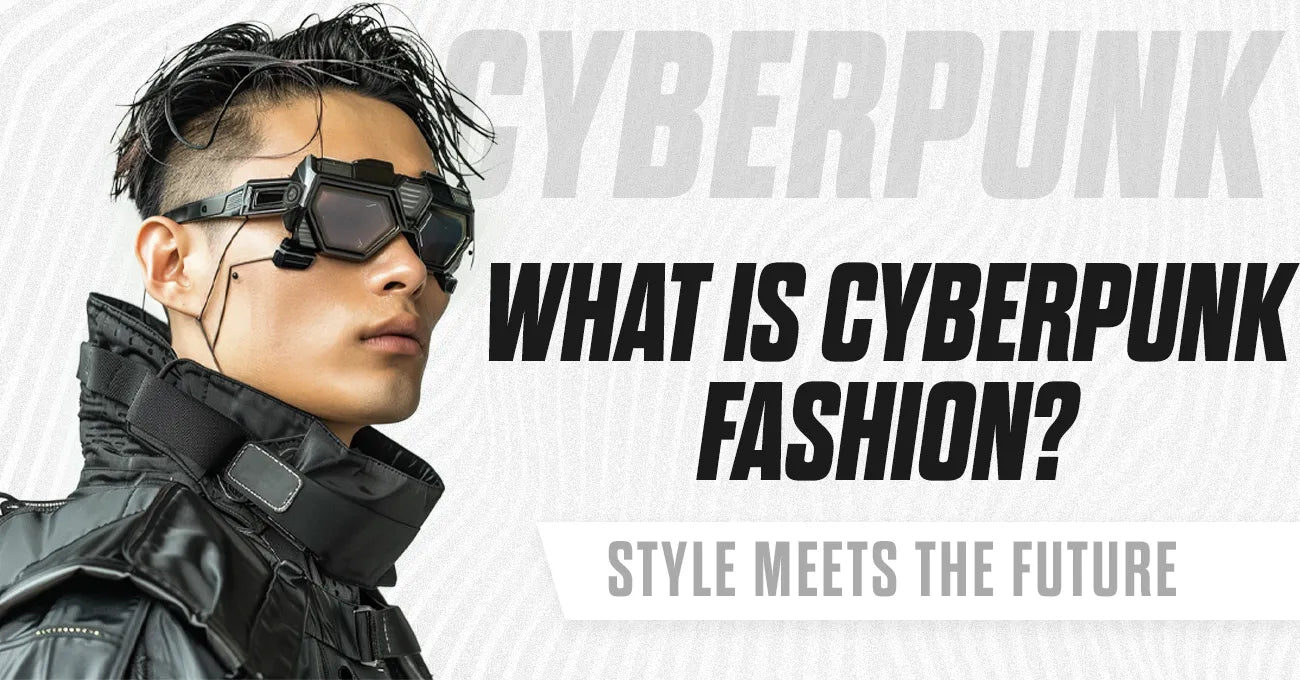
What is cyberpunk fashion?
Originating in the latter half of the 20th century, the genre of cyberpunk is described by a merciless vision of a high-technology, dystopian future.
Born from the minds of some of the most prescient science fiction scribes and futurist filmmakers, cyberpunk has found itself within the genre niche of popular culture for its unapologetic, neon-lit forays into a world fraught with high technology and corporate sovereignty.
Major literary works in the genre include William Gibson's "Neuromancer", and iconic movies such as Ridley Scott's "Blade Runner", which have both set an aesthetic for the genre and prepared a template thematically and visually, in the social order perspective, focusing on the difference between great technological advances and the decay of the social order.
Cyberpunk's Influence on Fashion
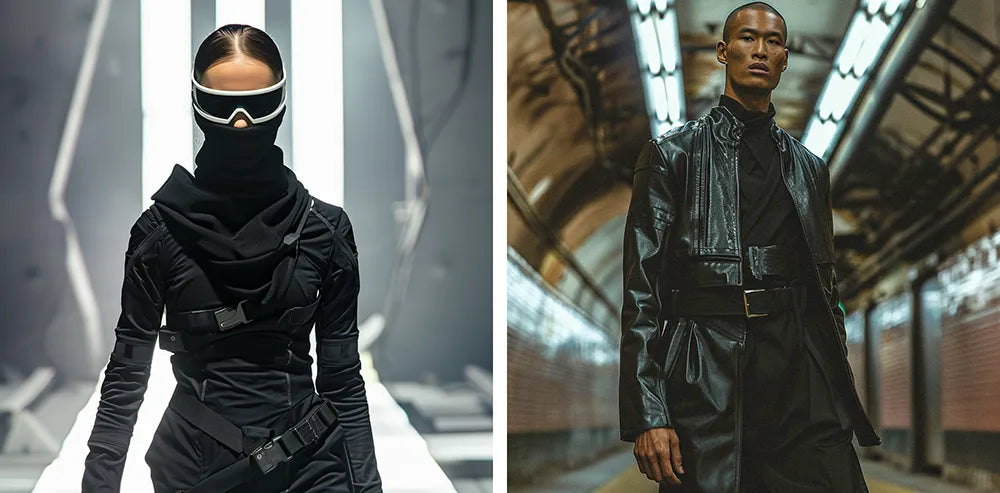
Of course, that striking vision of the future was not bound to pages and screens but naturally overflowed into fashion, influencing both designers and street style with its peculiar kind of tech-dystopian aesthetic.
The dressing style in cyberpunk is actually a combination of certain modernistic features and a rebellious stand against conventional clothes, usually taken with a lot of innovation in mixing the elements of technology and garments which are both functional and reflect an edgy, bleak urban ambiance.
This style calls for items such as leather, synthetics, and reflective fabrics, often accessorized with neon-bright electronic details to translate the colorful and disordered energy of cyberpunk cityscapes.
The influence on fashion is huge as cyberpunk further develops; it certainly has a border of being conventional and, at least, to infuse a feeling of futurism in the wearable for daily life. This article thus allows more research into how exactly cyberpunk has threaded itself into modern fashion, evolving to be a hyper form of both style and social commentary.
Historical Context and Origins
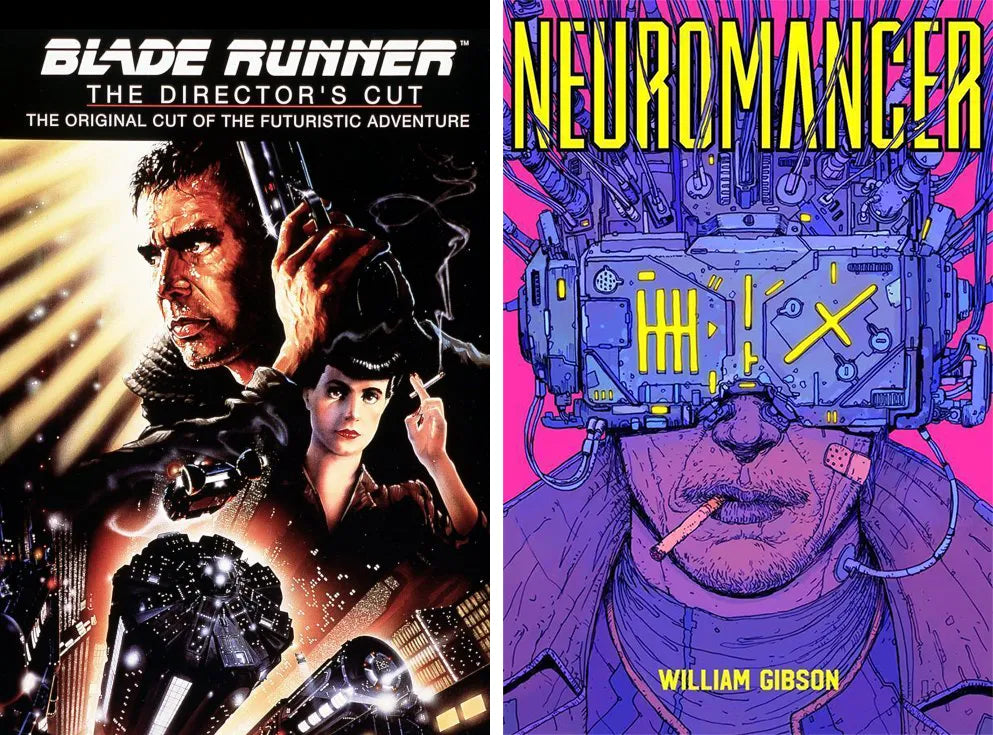
The Cyberpunk Genre
As a genre, cyberpunk germinated from new wave science fiction and blossomed into a rich, distinctive style by the early 1980s. The foundation of this genre lies in the narrative depths of dystopian futures, where society grapples very commonly with massive technological advancement that, concurrently, also brings along a breakdown of social order.
Leading the way in this movement was "Neuromancer" by William Gibson, first published in 1984, which not only brought forward the term "cyberspace" into the public jargon but also set a watermark for cyberpunk story with its picture of a world manipulated by data and cybernetics, entwined with human life.
Another cornerstone that epitomized cyberpunk in visual media was Ridley Scott's "Blade Runner" (1982). How this cinematically captured the soul of the movement with a future Los Angeles, setting in constant rain with huge neon billboards, and a multi-ethnic society but shattered to the very last piece.
Both "Blade Runner" and "Neuromancer" bring to the forefront this intersect in central cyberpunk themes of high-tech and low-life: a world depicted with various advanced technologies—artificial intelligence and cybernetics—set in sharp, dreadful contrast to the decrepit, wasting remains of social structures and sharp class divisions.
A style that would define the genre, these themes were repeated with a contrast of the glossy, polished things of advanced technology with the gritty, rough textures of urban decay.
Early Influences on Fashion
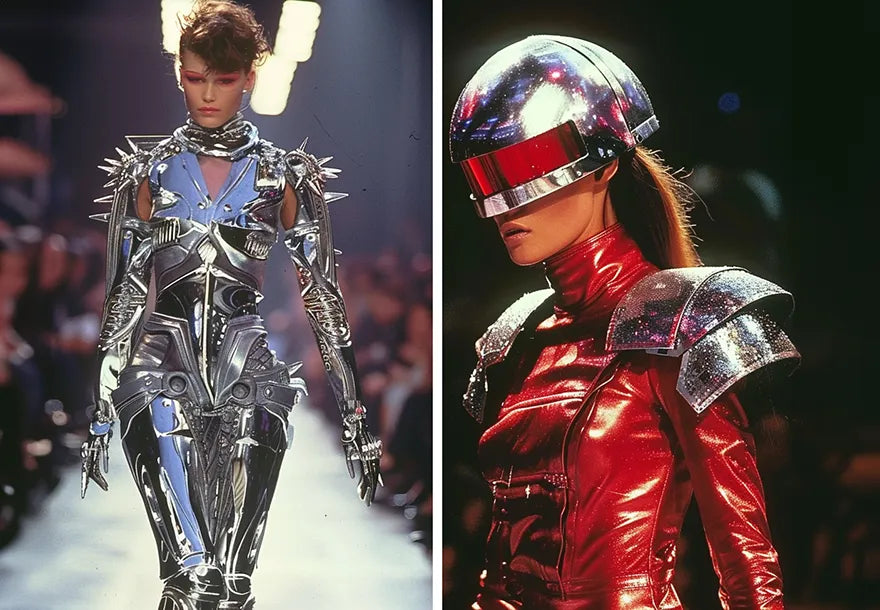
Vivid pictures and rich stories of the 1980s and 1990s cyberpunk mass media soon began to overspill over into fashion. Taking cues from harsh contrasts of the genre in both aesthetic and key elements, they injected metallics, neon, and reflectives into their garments for a future- and dystopian-themed effect.
The first waves of CyberPunk fashion are usually characterized by a DIY ethos that forever reuses heritage elements of fashion with a futuristic twist that rebellion and innovation hugged.
Key figures in the fashion industry began to experiment with these elements during the late 1980s.
Designers such as Jean Paul Gaultier and Helmut Lang were some of the early trendsetters to embrace the philosophy of cyberpunk, having included elements of the subcultural narrative and visual cues of cyberpunk in their collections; in doing so, translating the sensibility and ethos of the cyberpunk world effectively into wearable art.
Jean-Paul Gaultier, in particular, was known for his eccentric design, often combining pointy metallic hardware with dark, layered fabrics to epitomize the sensibility of cyberpunks. It seemed that during the '90s, when the genre truly found its footing in popular culture, more designers took to fusing cyberpunk in their fashion.
This tendency held truer nowhere than in the blend of high-tech materials, including synthetics and performance fabrics, with traditional designs of clothing. It rather faultlessly mirrored the thematic focus of the genre on the mixture of organic with artificial materials.
Its influence was also seen in the realm of streetwear and on the runway, as the typical dark palettes, neons, and general tendencies of "hacker chic" within cyberpunk represented an urban, edgy, somewhat anarchic style.
These early adoptions and adaptations of cyberpunk into fashion set the stage for a much larger and more profound influence on global fashion trends that would roll out over the ensuing decades.
Core Elements of Cyberpunk Fashion
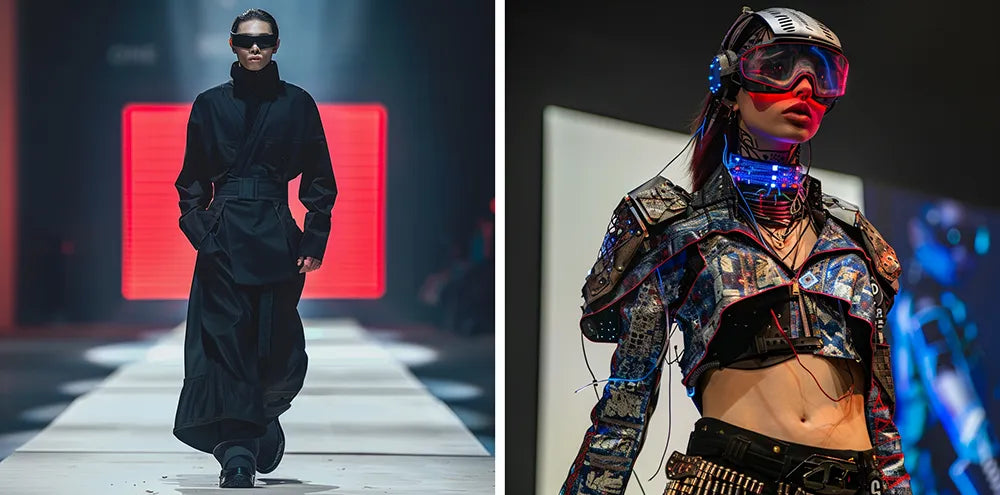
Aesthetic Characteristics
The Cyberpunk Look
Cyberpunk fashion is one of the futuristic ones, along with some grunge-looking style, which vividly stands for all the thematic fillings of high technologies and dystopia. It's a kind of style when the layered clothing takes functions and gives expressions on its own.
The usual attire of a cyberpunk is to mix it up, with some tight techwear that is body-conforming to get the silhouetted, clean, and streamline look, alongside some loose draped layers for mystery and motion.
Neon Colors: The other most defining attribute is the application of neon colors, showing wide application from neon-lit cityscapes. Neon blues, pinks, and greens showcase the main dark color palette, mirroring the visual vibrancy of representative urban landscapes of cyberpunk.
Layered Techwear: The layers are commonly techwear, consisting of multifunction pockets and hard-wearing materials with adaptive features. However, the layers are not merely functional but rather offer a complex array of things "going on," which give the impression of being "lived in," with a great deal at stake from the urban wilderness.
Futuristic Accessories: This outfit would not be complete without some basic accessories. Maybe those goggles are some highly futuristic, pollution-awareness signaling masks, and gloves that incorporate technology. Each accessory was a statement unto itself—not just of fashion but a suggestion of their own possible survival function within the tale of the cyberpunk.
Materials and Textures
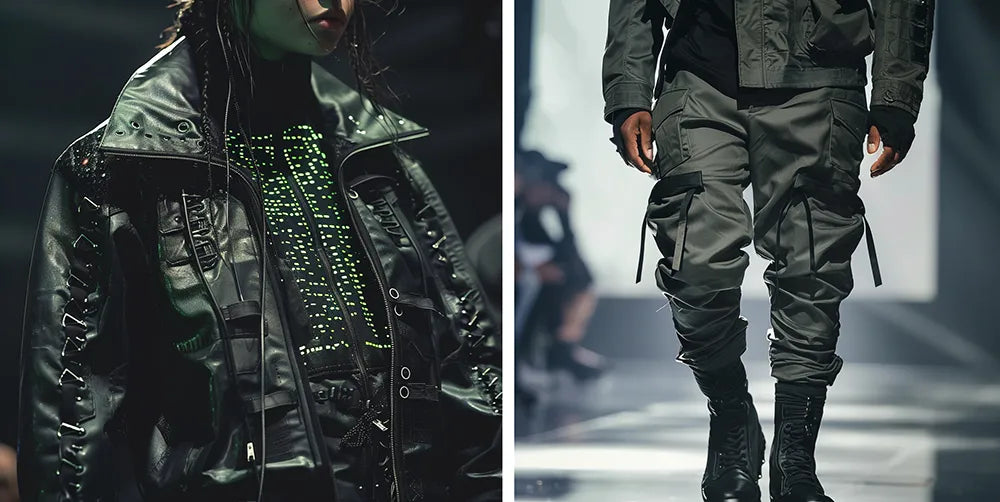
Leather: Cyberpunk fashion will very often make use of leather due to its strong and supple properties. The leather, however, is mostly treated so as to take an appearance of worn or cracked. Its use not only introduces a texture of ruggedness but also a semblance of history and tough.
Reflective Fabrics: These are the kind of fabrics used in making lights flicker with the tone of urban settings. It is used in jackets, pants, and accessories of those used in increasing visibility with an added stylish element, somewhat futuristic, compared to the typically gloomy surroundings portrayed in most cyberpunk tales.
These are electronic parts integrated into the clothing, which may include LED displays, lit wiring, or small screens, all functional but also used in the gear for ornamental purposes.
The following elements thus bridge the medium of clothing with gadgetry, turning the medium of clothing into an interactive, multifunctional tool reflective of the thematics of cyberpunk with its focus on technological saturation within daily life.
Cyberpunk fashion, with its characteristic use of distinct colors, layering, and material innovation, does not only adapt to the demands of a life high on technology, but it is also a loud statement of individualism and rebellion.
The apparel and accessories go beyond fashion; these are double agents that serve as some form of personal armor and identity in the imagined futures of a cyberpunk world.
Cultural and Philosophical Influences
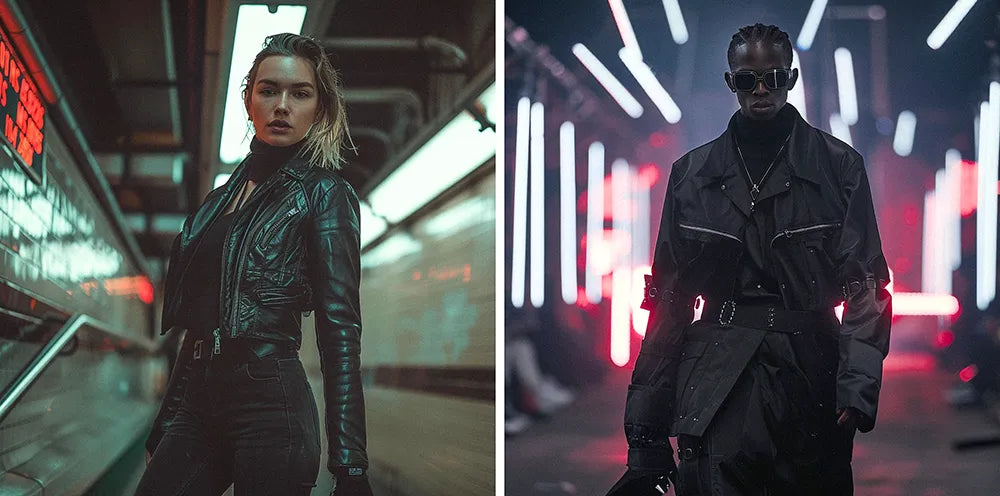
Themes of Anti-Authoritarianism and Rebellion
Fashion of the cyberpunk is associated with the anti-authoritarian motifs prescribing society's rebellion. The genre developed against the increasingly troubled attention given to corporate control, surveillance, and the erosion of personal freedoms, themes that have found cutting issues in stylistic choices.
The style of fashion is often raw, and there seems to be a militaristic edge in it, with items such as combat boots, tactical vests, and utility belts of every kind, symbolizing an attitude towards readiness in dealing with authority.
Such works held not only stylistic worth but also iconized a form of resistance, prepping for conflict both visually and in praxis within a high-surveillance-tight society.
Moreover, the DIY ethos prevalent in cyberpunk attire speaks volumes about its anti-establishment sentiments.
Custom jackets, with patches, hand-painted designs, and makeshift repairs, signal an indexical refusal of off-the-peg fashion in favor of personal expression and individuality. It is not only made up of recycled and reclaimed pieces of old garments, but it is also a statement against the consumerist culture dictated by corporate entities in the cyberpunk world.
Personalized attire becomes a way of personal and political expression. The identity is declared out into a world that would often want to smother it.
Role of Technology
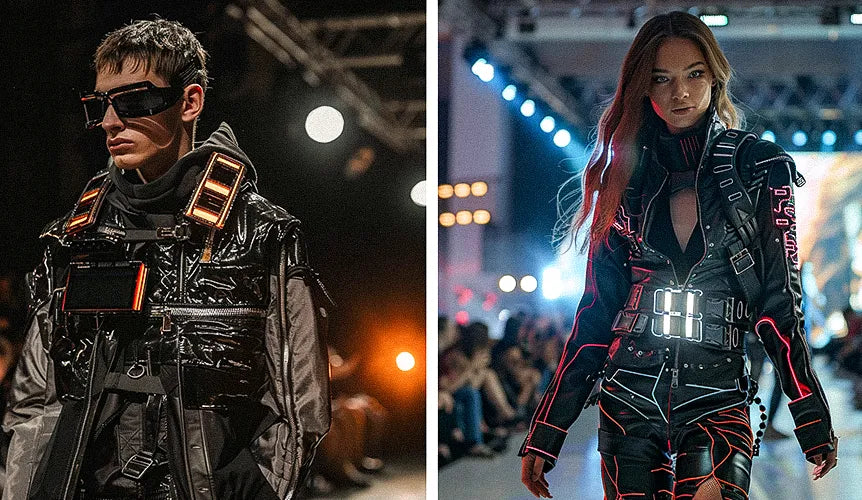
In the cyberpunk approach, technology does not add something to clothing but it acts as part of its ethos and function. Their inclusion points at how the genre is very much concerned with the future of human enhancement and the blurring lines of flesh and machine.
Future generations of wearables may well be fitted with built-in communication devices, biometric sensors, or even augmented reality interfaces in order to augment abilities and increase interactions with the natural environment. It is not with technology that this kind of clothing has a purpose to serve, but indeed a mean to question and bring forward the encroachments of technology on private life.
For instance, clothes that are able to protect one from digital surveillance, or clothes altered through unauthorized tech enhancements, then such things definitely challenge the "tech rule."
This means that this utilitarian tool integrated within the clothes can be looked upon justifiably as a tool and a subversive tactic for individuals to be navigable and able to resist the technological controls put upon them.
The dual nature of technology in cyberpunk—a double-edged sword that is both empowering and potentially controlling—perfectly mirrors the very complex relationship of the genre in the tech-dominated landscapes it imagines.
In this process, cyberpunk fashion functions not only to adapt but even to critically look at a technological future, offering a canvas in which wearers are able to express their fears and also those hopes that would be evoked from a world where technology continues to define the fabric of society.
Cyberpunk Fashion Today
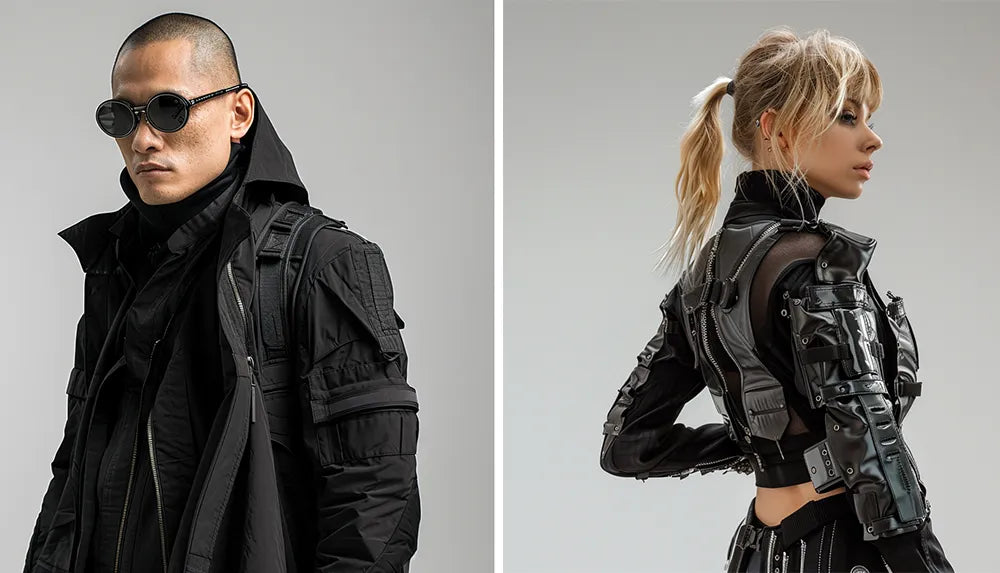
Integration in Modern Streetwear
Cyberpunk almost seamlessly has been integrated into contemporary streetwear, influencing or being influenced by modern trends of fashion that mirror exactly the fixation with futuristic aesthetics on the one hand and the pragmatic demands of city life on the other.
There arises, then, from both the unique ethos of cyberpunk and the constantly changing tapestry of streetwear, a very rich dialogue.
Adoption by Contemporary Streetwear Brands
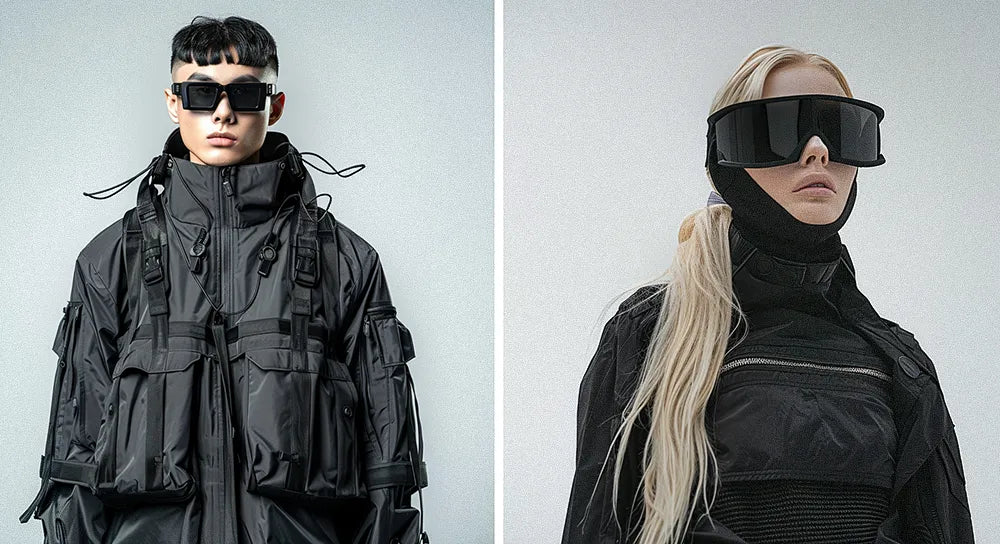
Many of the designers in streetwear have taken on many of the signature elements of cyberpunk: neon colors, technical materials, and an aesthetic that overlays the future onto the fringe.
Brands such as A-Cold-Wall and Y-3 are some of the first to put out collections that reflect the influence of cyberpunk with over-scaled sizes, utilitarian accessories, and a color spectrum ranging from strong monochrome to glowing neon.
But these are not really mere decors; they are grounded in the functional garment with materials that ensure resistance of weather, mobility increase, and even the modular capabilities of the garment.
In most cases, A-Cold-Wall uses asymmetrical cuts of clothing and textured materials that are somewhat kind of a dystopian utility, while Y-3's use of high-tech fabrics with streamlined sportswear silhouettes borrows from the sleek, high-performance aspect of the cyberpunk wardrobe.
These are, of course, companies that borrowed not just themes from Cyberpunk but really helped in the commodification of aesthetics in a way that made them palatable to a wide audience.
Blending of Techwear with Cyberpunk Styles
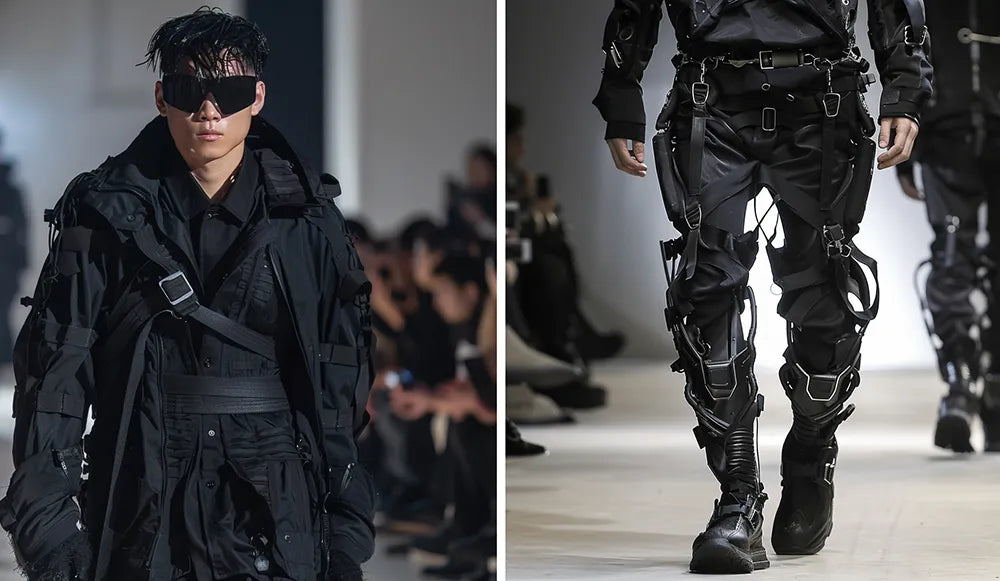
Techwear and cyberpunk styles in current fashion trends seem to cross with each other in that hyperrealism aspect. This improved and practical design in fabrics is brought in by Techwear only to add to the one already existing in cyberpunk fashion from the world of technology.
Their association in this evolution comes in their cutting-edge materials, such as Gore-Tex and Tyvek, used in everything from hiking gear to motorcycle-influenced clothing that is graced with aggressive futuristic designs.
Outfits usually include multi-pocket jackets, tactical vests, and cargo pants—all designed with at least nods to utility and a high-tech, dystopian future.
The present aesthetic synergy of "adaptability and preparedness" brings forth a shared identity for techwear with cyberpunk. "Adaptability and preparedness" resonate very well with the audience today, who would like their clothes to have style and yet serve the needed functionality.
And with the arrival of smart accessories, be it LED-lit sneakers or augmented reality eyewear, the line of where fashion ends and technology begins continues to blur further, hearkening to the cyberpunk vision for the integrated society.
These are gadgets with some functions that actually stand for the wearers' identity as one passionate in tech and fashion among cyberpunks. And such modernizations could not but give their way to the new life of cyberpunk in modern streetwear, influencing it with their vision of the future and adjusting to the corresponding aesthetical and pragmatic needs of the contemporary world.
This on-running collaboration fleshes out development within fashion whilst actually conserving the subversive spirit and technological enthusiasm from cyberpunk.
Influence on High Fashion
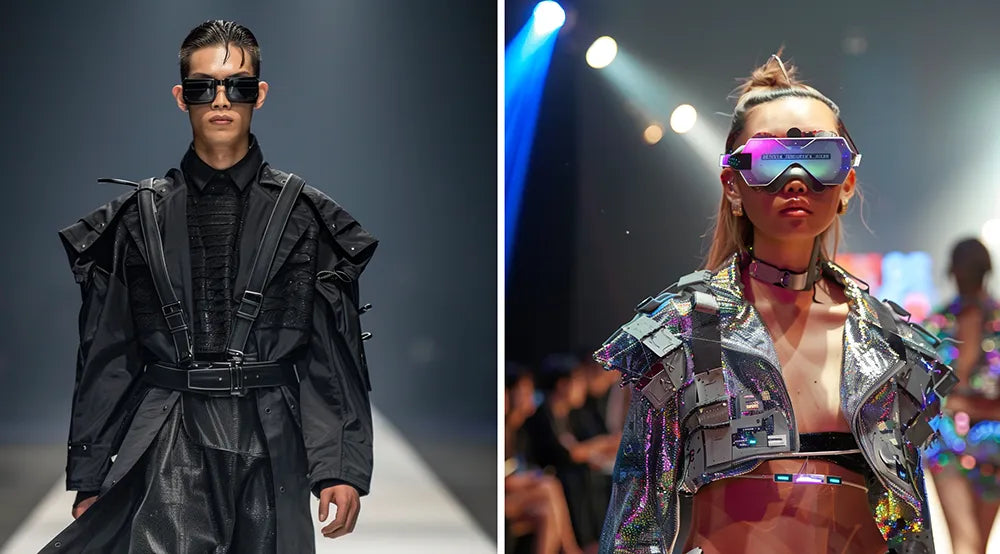
The penetration of the cyberpunk aesthetic from its countercultural origins has been so far-reaching that one feels its influence in high fashion, where many runway shows and collections feel this aesthetic at the bleeding edge of design.
This, therefore, reflects on a broader view of the domination movement in the fashion industry, which is opening its doors more to radical themes of futuristic designs that change all norms from the grass-root level of approach in fashion and design philosophies.
Runway Shows and Designer Collections
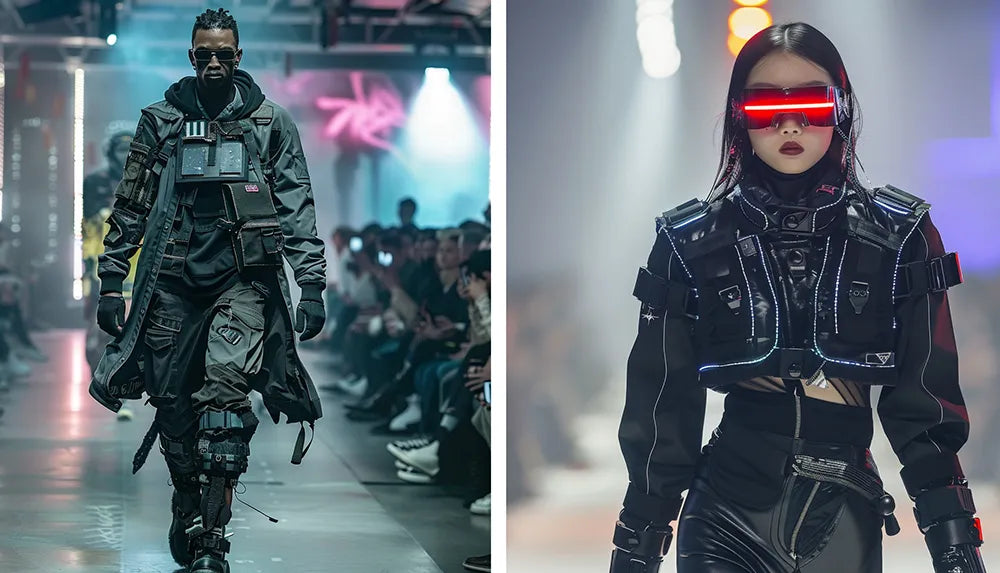
Even themes from cyberpunk have been picked up by high-end fashion designers and included it in runway shows, so the themes of cyberpunk now help push the bounds of what normally falls under the term 'fashion'.
For example, Alexander McQueen and Rick Owens have inspired from the cyberpunk theme and fused it into their collections, keeping in mind the design ethos of darkness and dystopia.
Where McQueen often threaded acute, metallic details and a silhouette that was unarguably futuristic into his collections, Owens's designs have become a post-apocalyptic style, aligning very close to the cyberpunk ethos against an urban decay backdrop in which it postures technological integration.
Even Balenciaga, under Demna Gvasalia, delivered a pretty different, overtly cyberpunk vision with super-sized silhouettes, layering textured fabrics, and hybridizing street-level grit with high-tech luxury. "
And these collections have exemplified how the influence of cyberpunk would merge with high fashion to make a vision that is both avant-garde and beguiling, resonating not only with a modern audience but also with the innovation and edginess they offer.
Impact on Fashion Industry Norms
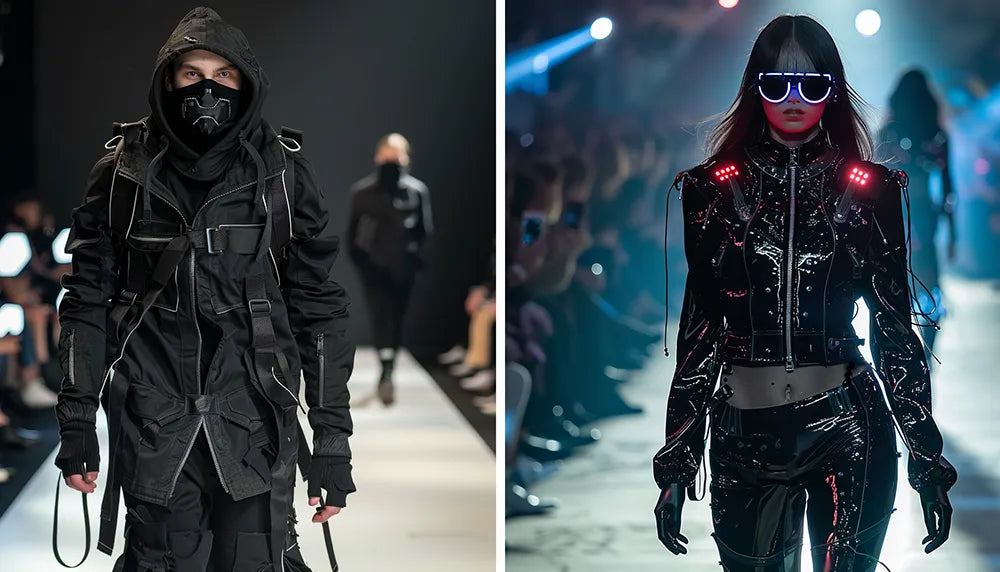
The integration of cyberpunk aesthetics into high fashion served to challenge and redefine the norms that the industry had set for itself in terms of material use, construction of the garment, and thematic exploration.
This has shown an increasing trend toward high-tech; for example, the use of synthetic rubbers, reflecting fabrics, and integrated electronics among some non-traditional materials in the creation of high fashion.
On the other hand, deep layering and surprising material fusions display a set of entrenched ideas about the structure of a piece of clothing. It offers new textural and formal possibilities.
Design Philosophy
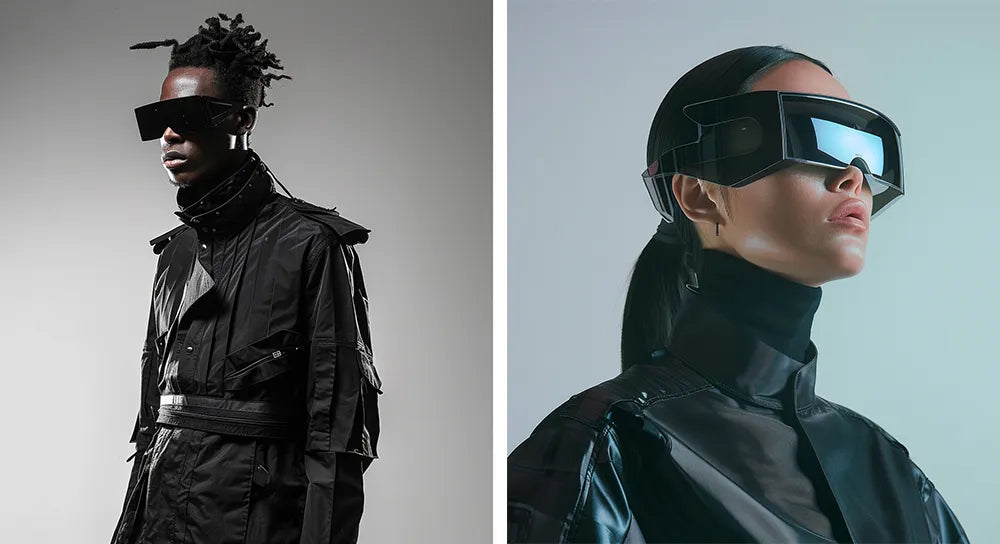
On that line, cyberpunk has influenced the way that philosophy underpins fashion design. It becomes an inspiration for them to think about the role that fashion has to play in a future whose contours are rapidly being defined with the changing advance of technology and society.
This reflex of the designers regarding privacy, surveillance, and identity in design has to make them often use an embedded 'narratives of resistance and empowerment' way in the process.
This shift marks even deeper engagement with the social and ethical fashion, dimensions pushing designers to view clothes as not just objects of aesthetic value but as vehicles for social comment and cultural expression.
As such themes work their way more into the fabric of mainstream fashion, it will certainly challenge the designers and consumers alike to envision and interface with a world in which fashion runs deeply into questions of technology and culture.
Cyberpunk Fashion in Popular Culture
Cyberpunk aesthetics have come much into resurgence in the whole spectrum of popular forms of modern media, like a distinct mark in movies, music videos, video games, and many more. This is such a resurgence that shows the rich visual and thematic depth of the genre and points toward the wide appeal and flexibility it offers in the digital era.
Cyberpunk in Movies and TV Shows
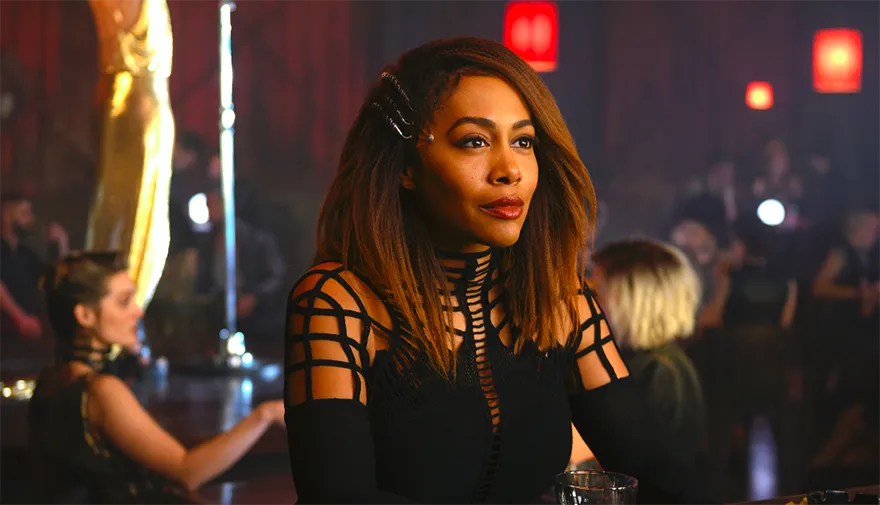
This is really where the greatest driving forces of cyberpunk aesthetics into mainstream audiences lay: lay within the realm of film and television. The most recent among them, "Blade Runner 2049," or "Altered Carbon," brought classic, time-proven topics of cyberpunk into a more modern view.
Lighting contrast, rain-slicked neon-lit streets, and characters styled in futuristic yet working clothes all seem to fit well into the "Blade Runner 2049," managing to give it a modern look while paying respect to the original. "Altered Carbon" is somewhat of a departure, blending the cyberpunk with some noir touches into a lushly visual, highly detailed, busy world where technology is literally integrated right into the fabric of day-to-day life.
Cyberpunk in Music Videos
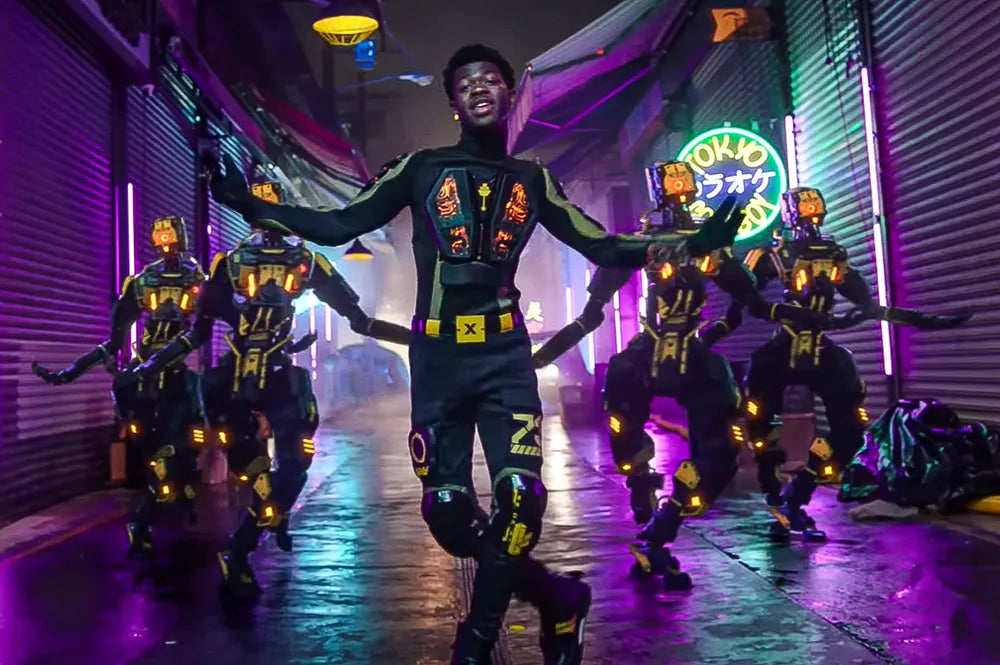
Even music videos have fallen under the spell of the aesthetics. The captivating cyberpunk aesthetics are so seductively engaging. Even artists like Grimes and the sensation that is Lil Nas X have taken ideas from the genre that speaks of dystopian futures and puts out ideas about their current society.
Grimes in her "Violence" music video interlines classical influences with those of the characters from a cyberpunk visual. It makes one consider this to be an ugly cityscape full of holograms in Lil Nas X's "Panini" video, showing how stars can inject such visual aesthetics into the imagery of pop music.
Cyberpunk in Video Games
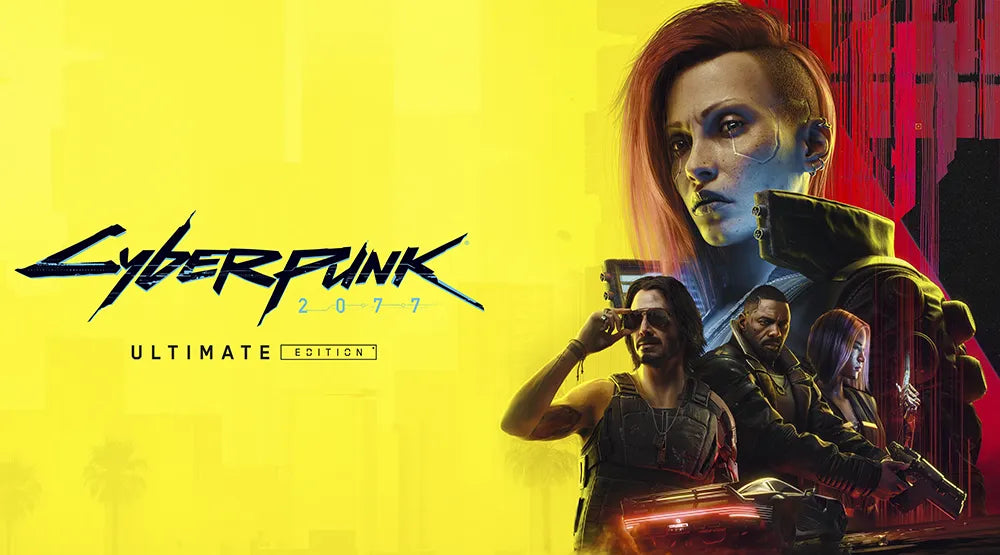
Video games offer a unique method of expression for cyberpunk through allowing gamers to traverse such artistic, painstakingly built universes. Within this context, "Cyberpunk 2077" may claim that it will remain one of the landmark games in the realm of cyberpunk, though of course, more than a little controversy has surrounded its release.
In this game, fashion is diversified, ranging from neon-colored hairs and tattoos to armor jackets and cyber-tech-enabled accessories. But they are not just decoration; they affect how the game is played and how characters react to the player, thus allowing fashion to underpin an intrinsic relationship between fashion and identity within the bounds of cyberpunk.
Iconic Public Figures and Characters
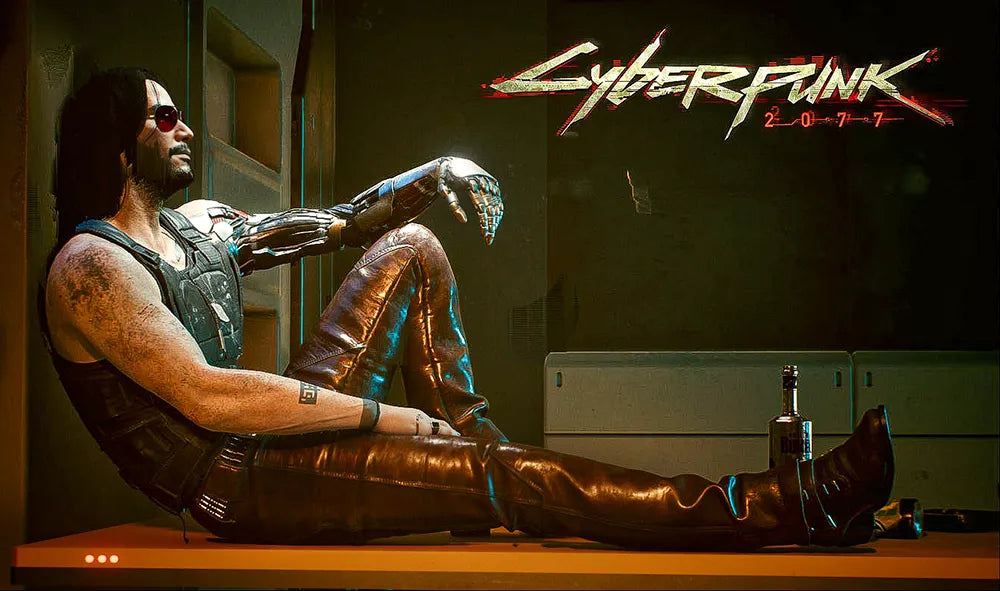
It has become a style represented by some public personalities or even heroes of fiction, it seems—those who determine the impressions of people and the way they will use it in real life. Keanu Reeves plays Johnny Silverhand in "Cyberpunk 2077," whose bionic arm, leather outfit from head to toe, and rock star attire are the peak of cyberpunk persona melding.
Translated into real-life applications on the world's stage, fashion icons such as Rihanna and Kanye West have used elements of cyberpunk when making public appearances and are often seen in attire featuring, one might say, futuristic cuts and rips amalgamated with rugged and militaristic components.
These figures help bridge the gap between cyberpunk as a fictional concept and its application in everyday style. This impact of the cyberpunk fashion into pop culture is evidence of the genre's endurance and adaptability power into contemporary tendencies.
What gives that this trend of cyberpunk fashion a dynamic force is that it not only determines character aesthetics and performer aesthetics but reigns over the whole aesthetic-cultural discussion of the future image of technology, identity, and style as it continues to permeate all media facets presenting it.
The Future of Cyberpunk Fashion
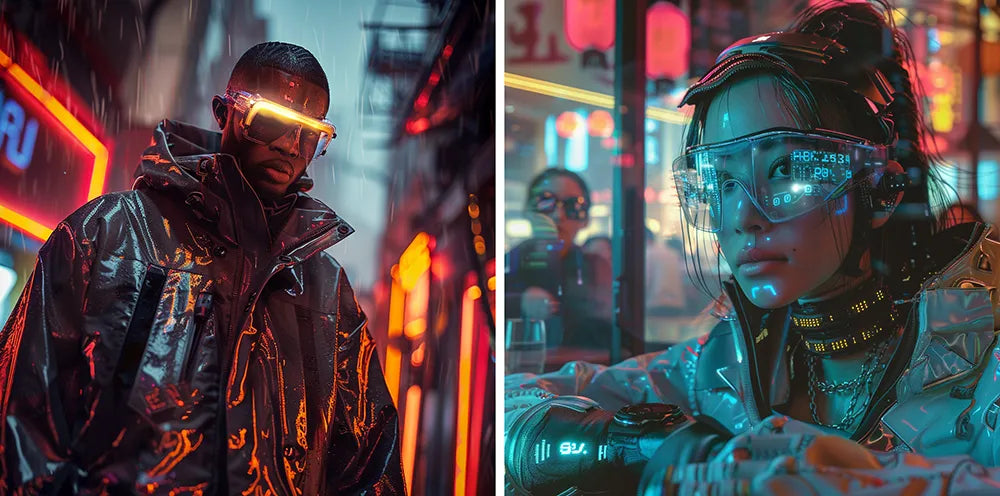
Emerging Trends and Innovations
This continues to spiral in marriage between fashion and technology, deepening every time, and unlocks yet more untapped potentials in clothing, especially within the cyberpunk genre. Now, fast-forwarding a little bit into the future, it seems that there are quite a few material, technology, and design trends that are emerging and could well redefine cyberpunk fashion.
New Materials
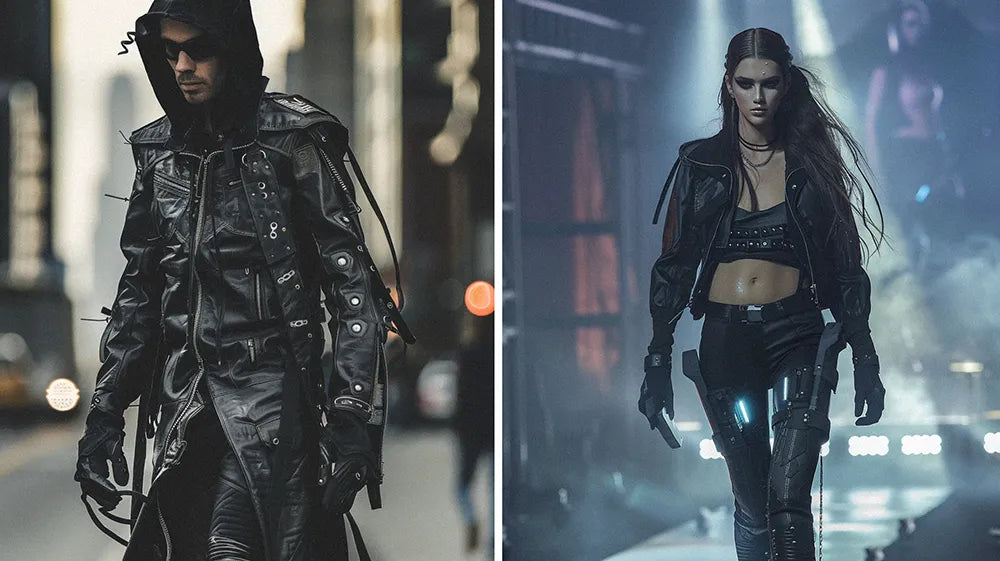
As the cyberpunk fashion develops, the trend will most definitely be followed by new advents that include fabrications to heighten the functionality and aesthetics of the item of clothing.
Materials like phase-change fibers reacting to changes in temperature, light-emitting fabrics that can change their colors or even display images, and cutting-edge nanomaterials providing unthought-of might and amazing properties of unassailable ultra-lightness.
All such materials should also help fashion to become more adaptive to the environmental and individual needs that it supports under the overall high-tech survivalist ethos of cyberpunk.
Technology Integrations
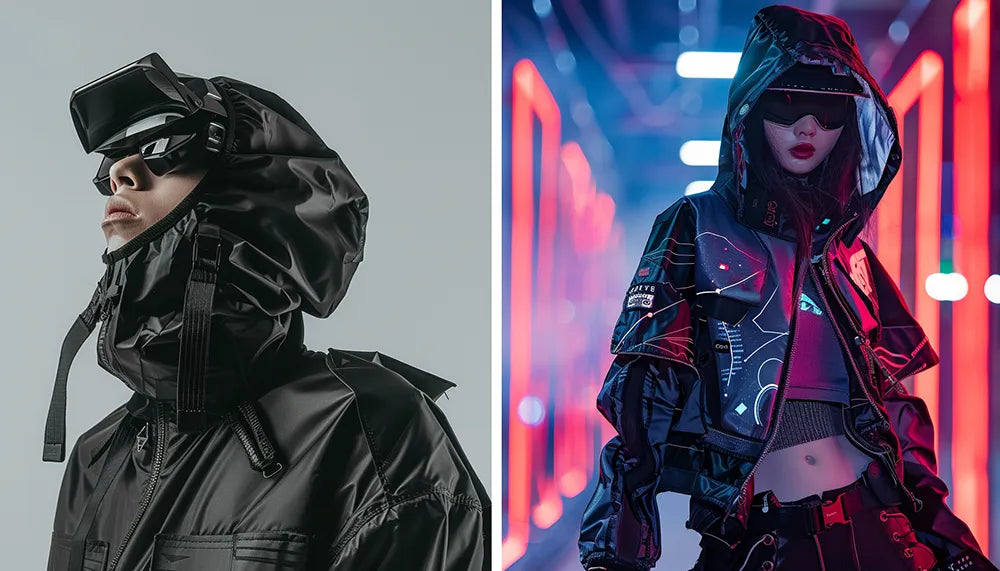
The technology would be embedded still further in the very fashion itself—not just for show, but into even more utilitarian, interactive technologies. The augmented reality interfaces might even be built right into a visor or glasses, providing direct overlays of real-time data to, well, augment the interaction of day-to-day life.
Wearable biotech would monitor health metrics and dispense drugs in case it is necessary. All of these will further enhance the probabilities of personal interfacing with the ever-increasing complex digital and physical worlds, thereby incorporating another cyberpunk principle of man-machine symbiosis.
Stylistic Evolutions
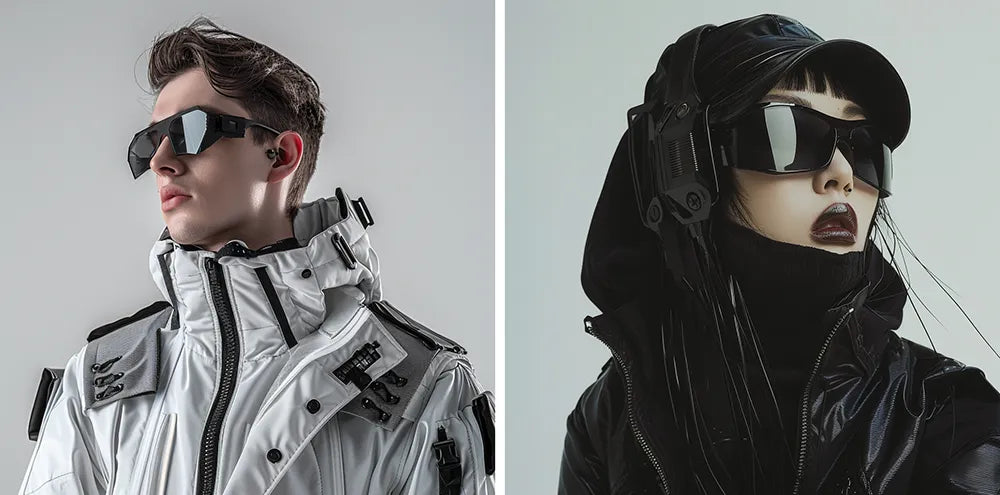
The fashion will further be expected to develop stylistically in such a manner that it increasingly blurs the boundaries between the digital and meat space. We would see the rise of virtual fashion, where the digital-only clothes are worth as much as the physical ones, especially in virtual environments and social media.
Whereby, the continuation of the cyberpunk design with a modern touch translates into a wearable device that is subtler, less obviously dystopian, and more seamlessly integrates with your smart fabrics and modular accessories that show the cutting edge in urban techwear trend.
Cyberpunk’s Role in Future Cultural Movements
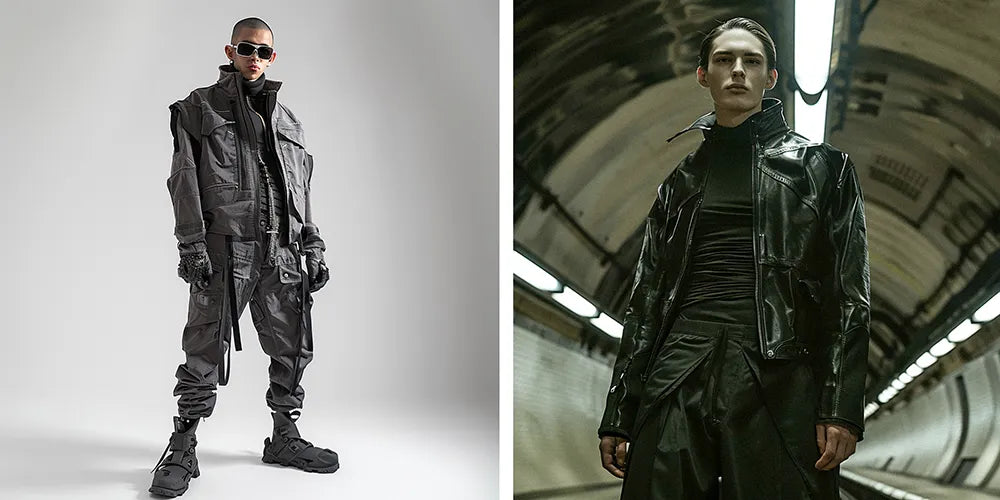
With the rise and rise of the cyberpunk fashion, its role in defining the cultural movements, especially in city areas, does become more and more influential.
Shaping Urban Identity
Fashion for such cities will be an important means through which people can show off their identity and means to express themselves.
Cyberpunk fashion, in its emphasis on individuality and integration with technology, could well offer the townsfolk a new way to express their identity and affiliation with mainstream wearable articles by ones that are at once utilitarian and emblematic of credos and style of life.
Reflecting Societal Concerns
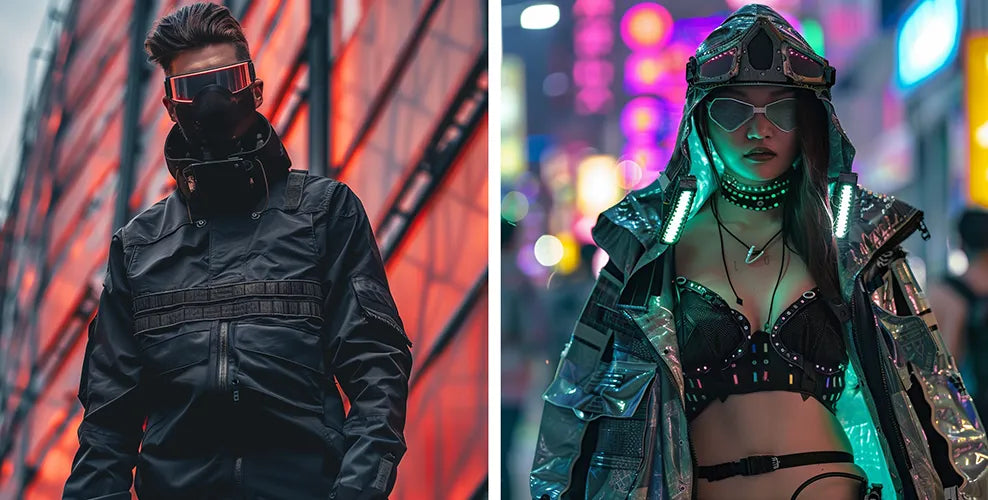
Cyberpunk has always been a genre that reflects societal anxieties about technology, privacy, and corporate power.
Could cyberpunk fashion, which seems to answer the call of environmental and social justice issues even more acutely than post-apocalyptic style, still retain the ability to represent another venue of genre-based clothing aimed at activism for issues of data privacy and the environment?
Clothes will be political in nature, meaning that they may have screens or projectors in them through which the cloth would show live messages or campaigns.
Promoting Sustainability and Ethics

Finally, the future of cyberpunk fashion could be shaped by a growing focus on sustainability and ethical production. This could manifest in pushing towards attire that uses recycled materials or can be recycled whole after use, thus aligning the same with themes concerning resource scarcity and ecological concerns in this genre.
Such a new standard in how fashion integrates with technology for sustainability—be it for direct implementation in the manufacturing process to reduce waste or in helping wearers reduce their own ecological footprint—may take it on an altogether new level.
Future cyberpunk fashion is going to be more than just the clothes that we will wear; rather, it would be the statements that those clothes make, from the values, societies, and technologies that will be governing our futures.
Conclusion
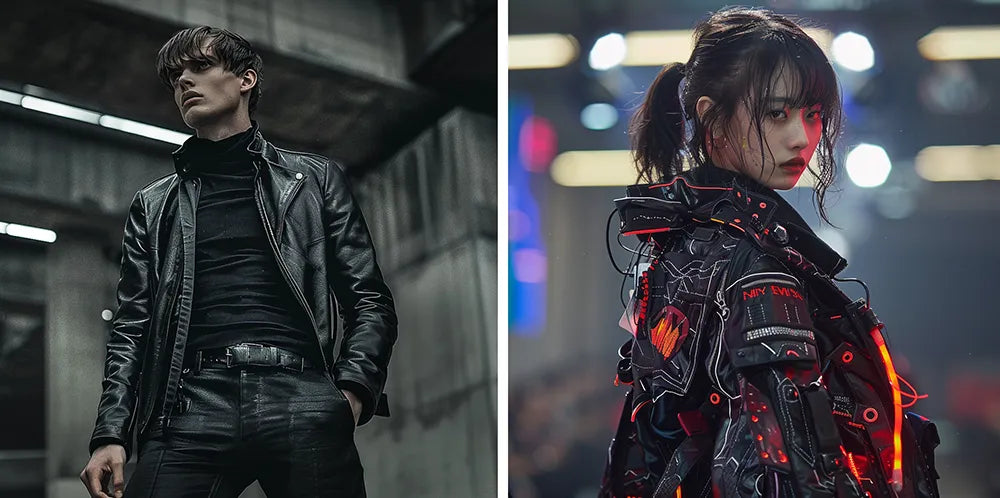
Cyberpunk has one of the strongest developments in contemporary fashion, from the science fiction factor of the twentieth century to emerging. In this piece, we will recap its change and further encourage its exploration.
Origins and Evolution: First surfacing in iconic science fiction works such as "Blade Runner" and "Neuromancer," the style has since evolved from underground cult obsession to mainstream fashion. Its aesthetics and themes have dug into high fashion and streetwear both, influenced by and bouncing back to society the interwoven advanced-technology visions of the genre with dystopian predictions.
Impact on Fashion: It may be at a very slow pace, but Cyberpunk has injected changes into the conventional forms of fashion. It brings forward a new understanding of context for what clothing can represent, very literally turning clothes into statements of integration with technology and speculative future scenarios.
Cultural Commentary: More than just a style choice, the style exudes themes of anti-authoritarianism, identity, resistance to corporate control, and the list goes on. This would place cyberpunk fashion as something more than just a style but a powerful medium for complex cultural and political narratives.
Personal Expression: Cyberpunk readjusts fashion as a vehicle for persons to get back into the fold of personal and social expression. It invites the wearers to: Experimentation of Futuristic Aesthetics:
- Experiment with Futuristic Aesthetics: Exploring with using materials and designs that reflect futuristic imaginations and personal style.
- Embrace Narrative Depth: Each piece of clothing can tell a story, unveiling personal ideologies and visions for the future.
- Engage in Cultural Dialogue: Cyberpunk fashion serves to enable people to add to a wider cultural dialogue about technology, privacy, and even the elements of human agency through the designs in it and its inherent message.
Future Potential: With the continuously changing technology and society, cyberpunk fashion has every potential to be on the cutting edge of thought and direction about how fashion will define human interaction with their world. This opens unlimited opportunities for innovations in aesthetics and function.
In summary, fashion in cyberpunk is always not about the clothes, but the interactive and flowing discourse amid technology, identity, and style.
Its fashion provocatively remains as an influence and influencer to the world surrounding the mentioned, a tool that questions personal identity and culture. Wearers and designers, step into a rich genre filled with narratives about our possible future.


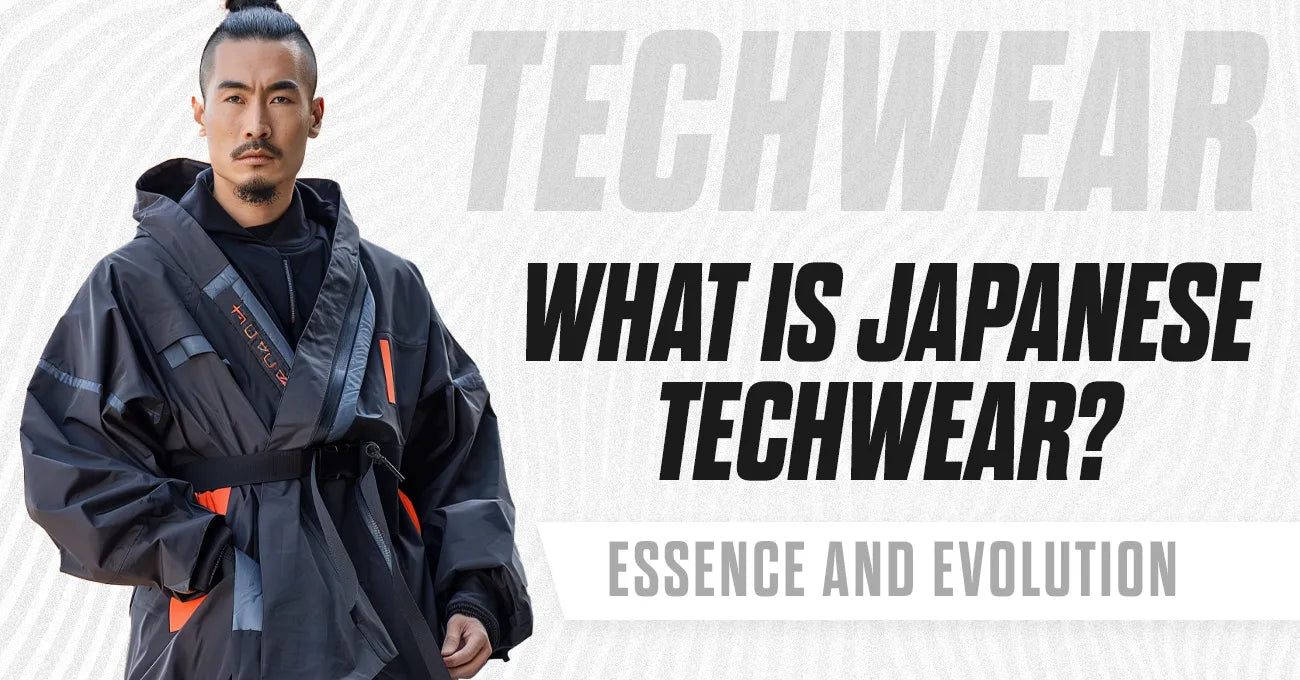
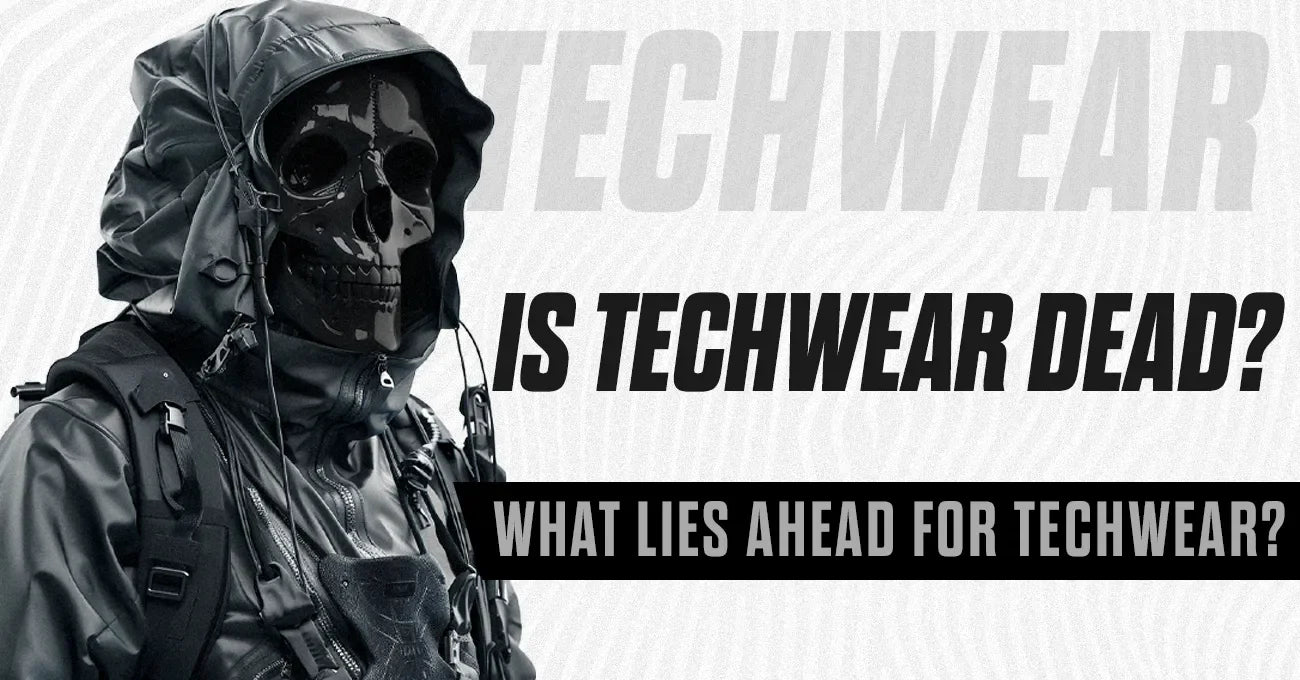
1 comment
Very interesting and multifaceted article. The only thing missing is captions under the photo. What brands are shown in the photo, what designers, etc. Since the photos are not Googled, it is possible that these are exclusive shots, so it is interesting to know what kind of designers created the clothes that are in the photo.
Paul
Leave a comment
This site is protected by hCaptcha and the hCaptcha Privacy Policy and Terms of Service apply.